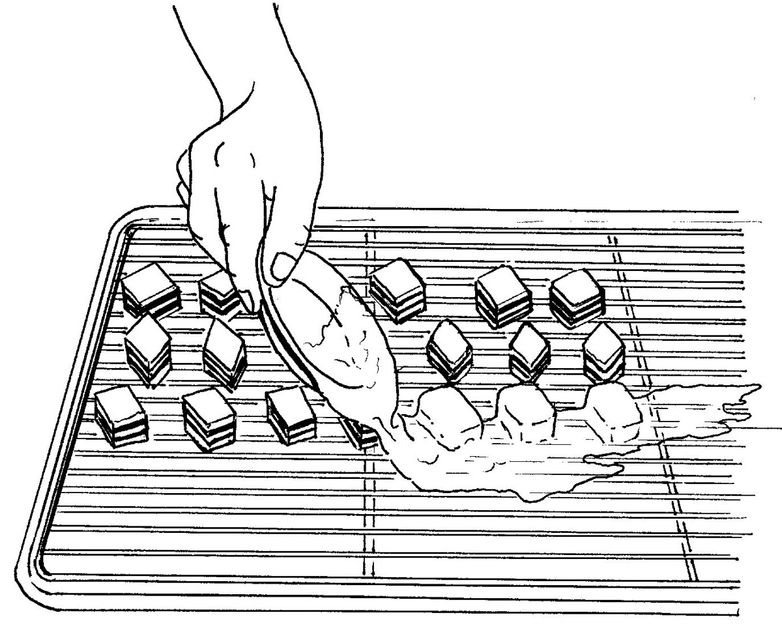Advertisement
Glazing or Icing with Fondant
Appears in
By Bo Friberg
Published 2003
- Warm fondant over simmering water, stirring constantly, until it reaches approximately body temperature, 98°F (37°C). When fondant is heated over 100°F (38°C), it begins to lose its shine and, at the extreme, becomes hard and unpleasant to eat as well. Should you overheat the fondant, wait until it has cooled to the correct temperature before you apply it (unless it has melted into a syrup, in which case you should discard it). To prevent a skin from forming, either cover the fondant or stir it while it cools. On the other hand, if you try to play it safe and the fondant is not hot enough when you apply it, it will take too long to form a skin and will not have a nice satin shine. Furthermore, the pastries will be sticky and hard to work with and can collect dust while they are drying.
- Thin the warm fondant to the proper consistency with simple syrup (adding egg white along with the simple syrup will add an extra shine; see Chef’s Tip). Test the thickness by coating a few pastries. The contours and separate layers of a petit four should be clearly visible through the icing.
- Either pipe or pour fondant on top of petits fours or Othellos. Never coat these pastries by dipping the pastry into the fondant, or you will get crumbs in the fondant. If you are coating only a few dozen pastries, the most practical method is to pipe the fondant on top (Figure 13-6) or to use a fondant funnel (see “About Fondant Funnels”). When covering a large number of pastries, a much faster way is to pour the fondant from a saucer. Line up the pastries or petits fours to be covered on an aspic rack or cake cooling rack as you would if you were piping the fondant on top. Hold the bowl of fondant in one hand and the saucer in the other. Scoop up fondant in the saucer and pour it slowly and evenly over the pastries from just above them (Figure 13-7). Always start with the pastry farthest away from you so you will not drip on the pastries once they are coated. Have enough fondant in the saucer so you can cover each row in one stroke. The drawback with this method is that you need to work with a large amount of fondant; however, the fondant that drips onto the pan can be reused or saved for later use.
Figure 13-6 Using a pastry bag to apply fondant to petits fours
Figure 13-7 Using a saucer to apply fondant to petits fours
- If you plan to tint a portion of the fondant, start by coating as many petits fours as desired in white, then tint part of the white fondant yellow. Use the leftover yellow to make green, and reserve any leftover green. Next, make and apply pink fondant, made by tinting the remaining white fondant. If any of that is left, you can combine it with the green to make a mocha color.
- To make chocolate fondant, quickly add melted unsweetened chocolate to the warm fondant. The chocolate will thicken the fondant, so you will need to add additional simple syrup.




